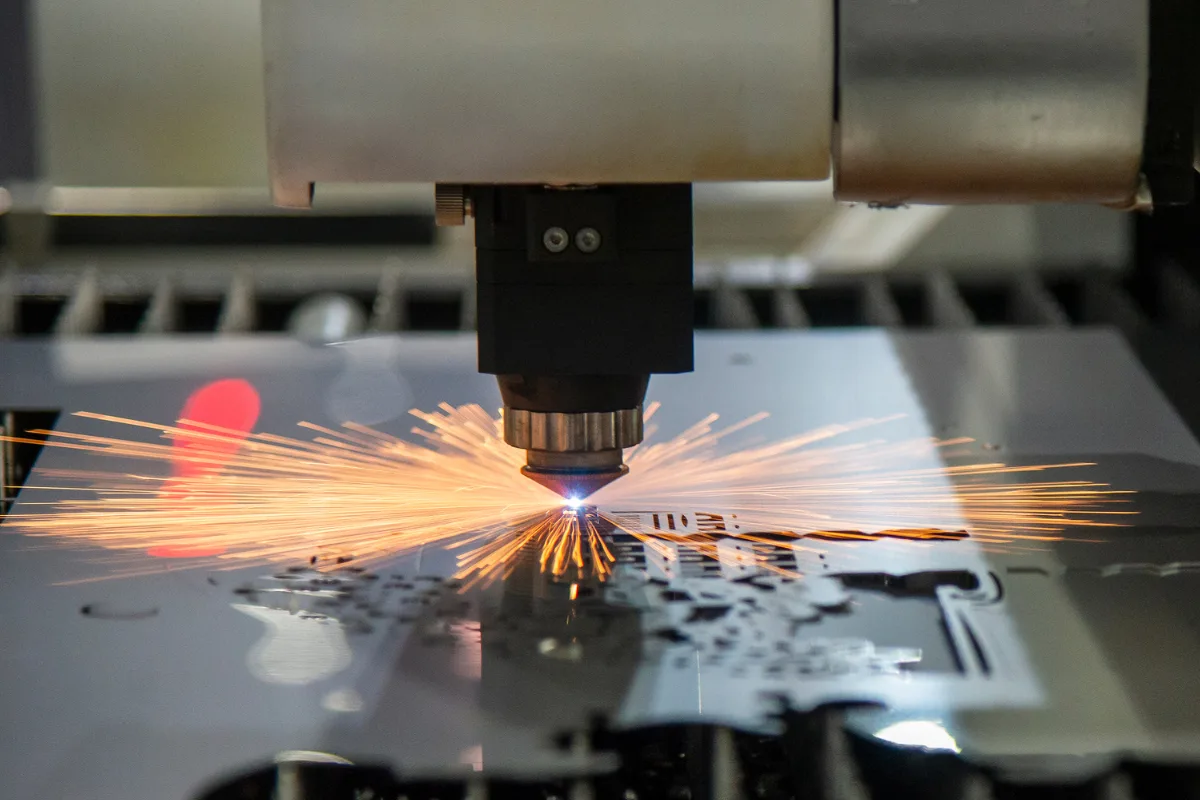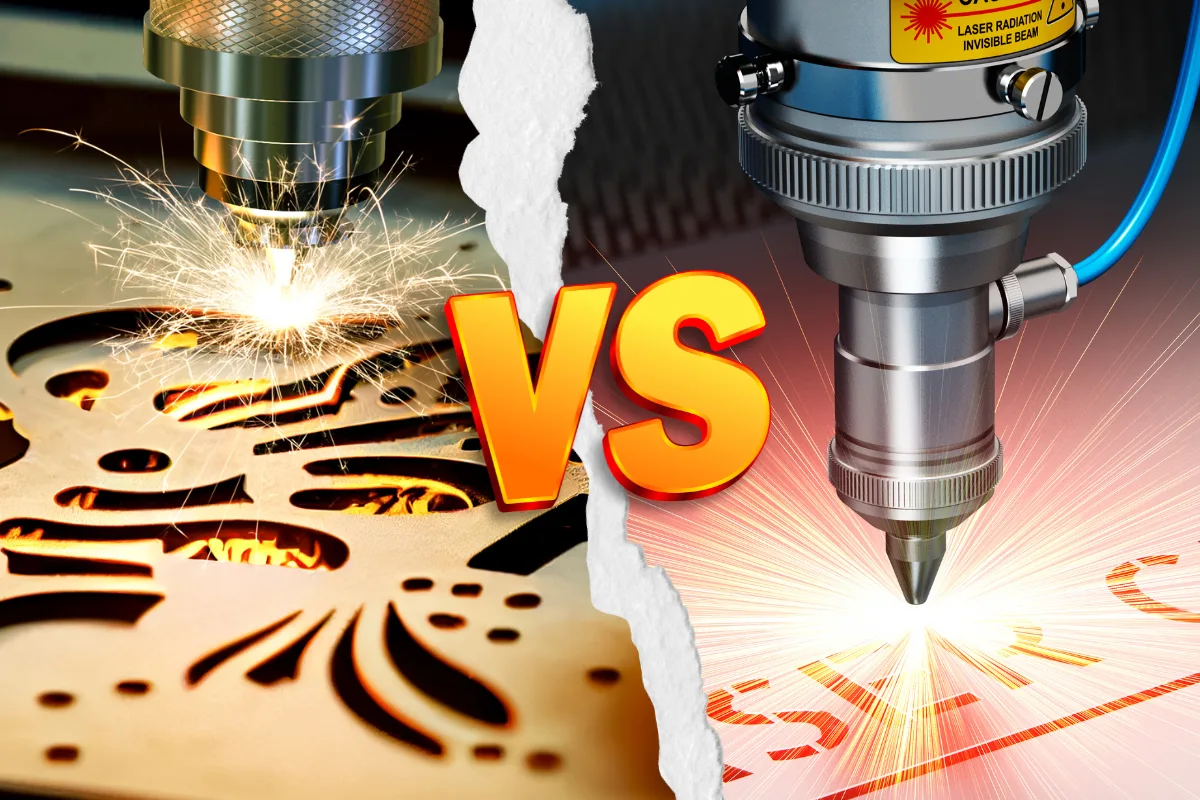
Have you been searching for a perfect machine that helps you achieve precise shapes and flawless designs? Chances are you’ve come across two popular options: die cutting and laser cutting. While both serve the same goal, they’re very different in how they work. So, what sets them apart? What are their advantages, limitations, and results? Let’s discuss the details and figure out which one, Die Cutting vs Laser Cutting, is the right choice for your needs.
Table Of Contents:
- What Is Die Cutting?
- What Is Laser Cutting?
- What Is The Difference Between Die Cut And Laser Cut?
- Die Cutting Vs Laser Cutting: Which One Is Right For You?
What Is Die Cutting?
Wondering ‘how to use a die cut machine?’ and ‘what is a die cutting machine?’, we’ve got all the answers. Die cutting is a traditional manufacturing method that relies on a custom-made die to cut, shape, or stamp materials into exact designs. Think of the die as a mold or stencil that delivers consistent results. This process is especially efficient for the high-volume production of uniform shapes and is commonly used with materials such as paper, cardboard, fabric, rubber, leather, plastics, and even thin metals.
Important Insights:
Mechanism: Die Cutting uses a mechanism where the material is pressed against the die to produce clean, consistent shapes.
Types: Flatbed die (stationary) and rotary die (rotating for continuous production)
Applications: It can be used in various industries, including packaging, stickers, textiles, industrial components, and crafts.
Advantages: It is ideal for mass production, achieving speedy outputs, consistent shapes, and low per-unit costs.
Limitations: Less flexible for complex or customized designs, as new dies are needed for different shapes.
What Is Laser Cutting?
Laser cutting uses a high-powered, focused laser beam to cut materials with high precision. A contactless technology, it is controlled by a computer (CNC); the laser follows a set path to melt or burn through the material. A stream of gas helps clear away debris, leaving smooth and clean edges.
Important Insights:
Mechanism: Laser cutting employs a mechanism that utilizes a high-powered, contactless, and focused laser beam to precisely cut, engrave, or etch materials along a designated path.
Types: CO2 lasers, Fiber Lasers, and diode/UV Lasers.
Applications: It is widely used in signage, automotive parts, electronics, jewelry, textiles, packaging, and prototyping industries.
Advantages: It’s ideal when you require highly precise custom designs with minimal tool wear. It is also suitable for prototyping and low- to medium-volume production.
Limitations: Slower for large volumes, may leave slightly burned edges, requires more setup costs, and requires proper ventilation.
What Is The Difference Between Die Cut And Laser Cut?
Here are some of the features that make the two technologies different from one another. Let’s take a look at the details of die cutting vs laser cutting:
| Feature | Die Cut | Laser Cut |
| Set up | Requires a custom die for each shape | No physical die needed. You just program the shape in software |
| Design flexibility | Less flexibility | Highly flexible |
| Material depth | Particularly strong for thicker materials and multi-layer stacks | Has limits on how thick a material it can cut effectively and requires the machine to do multiple passes |
| Maintainence | High | Lower maintenance |
| Cost-effectiveness | Very cost-effective at high volumes | Less economical at very large volumes |
| Speed | Very fast for repeated cuts with the die once set up | Fast, especially for complex patterns, but slower compared to die cutting for very high volumes of simple shapes. |
Die Cutting vs Laser Cutting: Which One Is Right For You?
It depends. What you choose among the two depends on several factors. When deciding between die cutting vs laser cutting, consider your project’s volume, material, design complexity, and budget. Die cutting is more efficient and cost-effective for large runs of simple shapes, especially on softer materials.
On the other hand, laser cutting provides superior precision and flexibility, making it ideal for intricate designs or low-volume projects across a wider range of materials and industries. So, gauge what suits your requirements and make an informed choice.
And as we wrap up die cutting vs laser cutting, in case you feel that laser cutting is the solution you’re looking for, let Prakash Laser be your best partner. Our heavy-duty laser machines deliver global-standard precision backed by advanced R&D. Book a demo today and let us handle the rest. Trust us, by partnering with us, your business is set to reach new heights. Contact us now.

